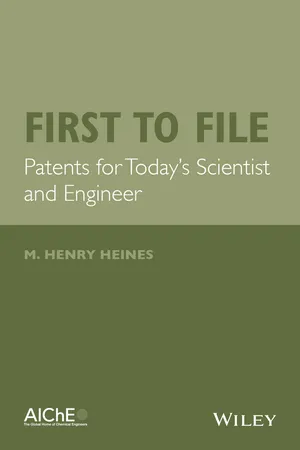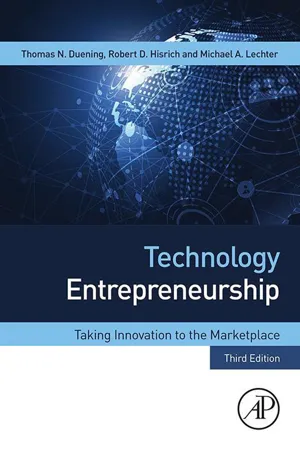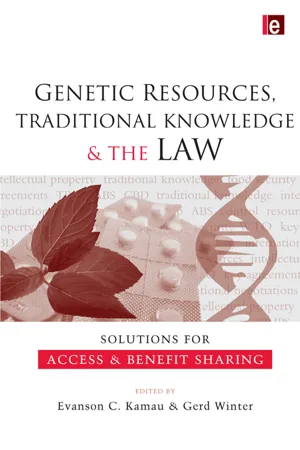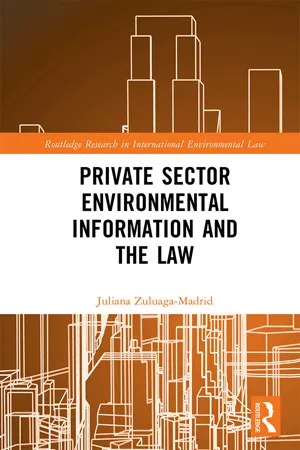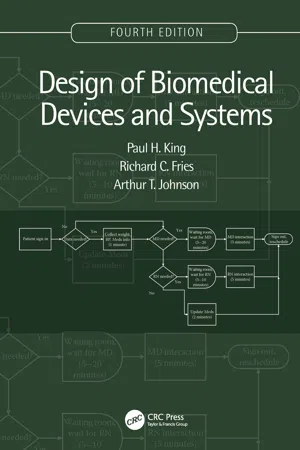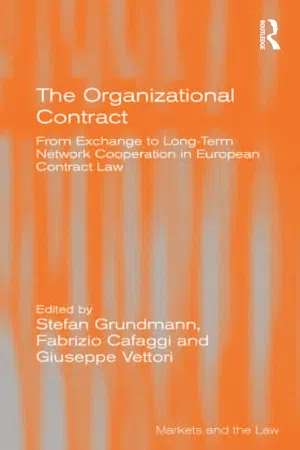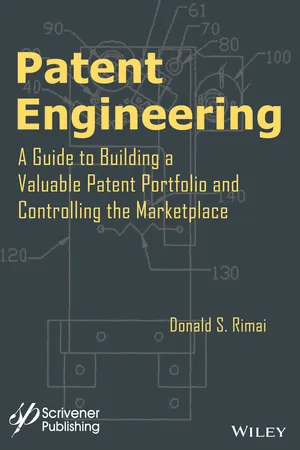Technology & Engineering
Trade Secret vs Patent
Trade secrets and patents are both forms of intellectual property protection. A trade secret is confidential information that provides a competitive advantage and is not publicly disclosed, while a patent is a government-granted monopoly right for an invention, providing exclusive rights to make, use, and sell the invention for a limited time. Trade secrets offer perpetual protection as long as the information remains confidential, while patents have a limited duration.
Written by Perlego with AI-assistance
Related key terms
10 Key excerpts on "Trade Secret vs Patent"
- eBook - ePub
First to File
Patents for Today's Scientist and Engineer
- M. Henry Heines(Author)
- 2014(Publication Date)
- Wiley-AIChE(Publisher)
An employee's obligation to preserve a present or past employer's trade secrets is a legitimate interest and right of the employer. All industries recognize however that individuals should have the freedom to change employers and still use their skills and experience. Skills acquired prior to the start of employment, such as those learned at a university or a vocational school, are typically expanded and improved on the job as an employee gains experience and learns ways to increase productivity, efficiency, and product quality. This type of skill development makes the employee more valuable to the employer but is also part of the employee's basic learning curve. Differentiating between acquired knowledge that is more properly characterized as an addition to or expansion of one's professional skill set and that which is company proprietary is at times difficult, however. When an employer sues a former employee for trade secret misappropriation, therefore, the tribunal will often seek to balance the interest in encouraging the use of trade secrets to promote investment in research and sustainable business activity with the need to allow the individual to work in her/his chosen field. Trade secret obligations that effectively prevent the individual from doing any work in the same field can thus be limited by a court of law and in extreme cases declared entirely unenforceable.11.1.3 Comparing Trade Secrets to Patents
Trade secrets differ from patents in many respects, prominent among which are scope of coverage, duration of enforceability, the disclosure of proprietary information to the public, and cost. For both trade secrets and patents, the scope of coverage can be a matter of choice, but in most cases, only patents are specifically prepared with the intention of defining and obtaining coverage for a particular scope. As for duration, the term of a patent is limited by statute, while a trade secret can remain in force indefinitely. A patent is by definition a public disclosure of the technical information that it protects, while a trade secret once publicly disclosed is no longer a trade secret. In terms of cost, patent coverage has significant upfront costs, including both PTO filing fees and attorney fees, as well as additional PTO fees and attorney fees between filing and issuance, depending on what the application encounters during examination. Still further costs, in the case of utility patents, are the maintenance fees that the PTO imposes to keep the patents in force once they are issued. Trade secrets, by contrast, do not entail official fees of any kind and can be established without the services of an attorney. The public disclosure distinction between patents and trade secrets is of particular concern to certain types of business for which the potential for harm to a company's interests from public disclosure of the information through a patent is considered to be outweighed by the power conferred by the patent to threaten competitors with infringement liability. Since a trade secret owner can restrict and thereby control the dissemination of its trade secret information while the information in a patent is publicly available and readily searchable, even before the patent is granted, companies with this view tend to prefer trade secrets. Both patents and trade secrets however have their place among the corporate IP. - eBook - ePub
Technology Entrepreneurship
Taking Innovation to the Marketplace
- Thomas N. Duening, Robert A. Hisrich, Michael A. Lechter(Authors)
- 2020(Publication Date)
- Academic Press(Publisher)
Trade secret protection has a potentially infinite duration. The information underlying the trade secret is protected as long as it is not accessible to competitors. However, a trade secret can be very fragile. Once a trade secret becomes generally known, irrespective of how it becomes known, the protection is lost. A trade secret also provides no protection against independent development of the technology by others.In the United States, trade secret rights that are enforceable against others are provided under the laws of the various individual states and, as of May 11, 2016, Federal law.28 To qualify for protection, the subject matter of the trade secret right must meet certain prerequisites. It must not be generally known, and must: (1) derive some value from being kept secret, and (2) be subject to reasonable efforts to maintain its secrecy. As will be discussed, reasonable efforts typically involve restricting access and establishing contractual obligations of confidentiality.Some types of technology are simply unsuited for trade secret protection. For example, any technology that is evident from marketing materials, or that can be reverse engineered from a product that is sold to the public, cannot be maintained as a trade secret. In general, in the absence of an express or implied contractual obligation, any unpatented technology that comes into an entity’s possession legally can be freely used and copied. However, obligations to maintain the confidence and limit the use of unpatented technology can be established through an appropriate contract.Information that is generally known in an industry and basic skills or practices employed in an industry, even though unquestionably valuable to a business, do not qualify for trade secret protection. Typical examples of such nonproprietary know-how - eBook - ePub
Genetic Resources, Traditional Knowledge and the Law
Solutions for Access and Benefit Sharing
- Evanson C. Kamau, Gerd Winter, Evanson C. Kamau, Gerd Winter(Authors)
- 2009(Publication Date)
- Routledge(Publisher)
According to Cornish and Llewelyn (2007) these are: (1) valuable information; (2) not generally known to the relevant portion of the public; and (3) being subject of reasonable efforts to maintain their secrecy (Cornish and Llewelyn, 2007, p308; Francis et al, 2007, p30f). Thus certain factors would determine what a ‘trade secret is and what is not’. These include: the extent to which the information is known outside the business; the extent to which it is known to those inside the business, that is, by the employees; the precautions taken by the holder of the trade secret to guard the secrecy of the information; the savings effected and the value to the holder in having the information as against competitors; the amount of effort or money expended in obtaining and developing the information; and the amount of time and expense it would take for others to acquire and duplicate the information. 20 Therefore, a trade secret is any valuable business information that is not generally known and is subject to reasonable efforts to preserve confidentiality. 21 Patent law does not offer any protection for trade secrets because they do not fulfil one of the conditions of patent protection, that is, disclosure. In addition, some of the trade secrets do not meet the patentability criterion of novelty, as they require only a minimal level of inventiveness (Francis et al, 2007, pp10, 22). 22 They are hence maintained through secrecy and transferred under an oath of no breach of confidence. For a breach of confidence (in respect of technical, commercial, personal and other information) to be actionable in the American and English courts, the following conditions are necessary: 1 The information itself must have the necessary quality of confidence about it (Cornish and Llewelyn, 2007, §8-09). No right of action would exist if the object is available in the open market and an obtainer is able to analyse it so as to find out its secret content (see Francis et al, 2007, p9) - eBook - ePub
Intellectual Property Overlaps
Theory, Strategies, and Solutions
- Robert Tomkowicz(Author)
- 2013(Publication Date)
- Routledge(Publisher)
86 which is becoming more common as many inventions are initially created through computer simulation without the physical creation of the invention. And because only one patent can be granted for utility of identical or equivalent inventions, patent rights are most exclusive of all intellectual property rights – in the search for the patent monopoly there is only one winner. This unique characteristic of patent rights has profound consequences for overlaps of intellectual property rights, which is explored in subsequent parts of this chapter.Strong patent rights are balanced with various policy considerations that are expressed in specific statutory provisions. For example, in the UK the Crown can effectively take over a patent, subject to payment of compensation, on the bases of national security,87 or force exploitation of a patent contrary to the patentee’s decision.88 Similarly, in Canada, the federal or provincial government may request authorization to use patented inventions for the benefit of the general public without authorization of the patentee upon payment of reasonable fees,89 and in cases of national emergency this request cannot be denied.90 The government can also authorize use of medical patented inventions and set royalties for their manufacturing for humanitarian purposes,91 and impose compulsory licences when patent rights are abused.92 In this way, the general public, represented by the government, is protected to some extend from possible abuses of patent monopolies by patentees. The strength of patent monopoly is also offset by its relatively short 20-year duration.2.2 Patents and trade secrets
Trade secrets are protected under the law of contracts, fiduciary obligations, and equity, which will pursue secret information into the hands of a third party who receives it with knowledge that it was communicated in breach of confidence.93 A trade secret may be a plan or process, tool, mechanism, or compound known only to its owner and his or her employees who need to know it. It may also be a secret formula known only to certain individuals who use it to compound an article of trade that has a commercial value or is used in a business, and which gives them an advantage over competitors. Trade secret is lost when it is discovered by an examination of the product or by any other honest way.94 - eBook - ePub
Intellectual Property Excesses
Exploring the Boundaries of IP Protection
- Enrico Bonadio, Aislinn O'Connell, Enrico Bonadio, Aislinn O'Connell(Authors)
- 2022(Publication Date)
- Hart Publishing(Publisher)
9 and consequently by many countries around the world. There are three primary reasons why a business might opt for trade secrecy protection rather than patent protection. The first and most obvious reason pertains to the cost-effective nature of trade secrets as compared with patents. Indeed, while obtaining a patent is contingent on a time consuming and (often) expensive registration process, trade secrets obviously require no registration and have no public notice requirements. In some cases, the innovation might be relatively minor, thus not justifying such investment. The second reason is that trade secrecy and patents only partially overlap in their potential coverage. There remain areas where patent law would not apply (customer lists and data; research plans; business plans, etc), with trade secrecy law being able to provide protection for such information instead. Third, while patent protection lasts for a relatively short period of time (generally 20 years from the date of filing the application), trade secrecy may potentially be protected indefinitely, until the information becomes public, for example because it is uncovered through reverse engineering or other legitimate means.II.Manifestation of Excess in Trade SecrecyIn the previous section I have highlighted the importance of trade secrets, and the rationales for protecting them. It seems however that over time and in light of new challenges trade secrets are slipping quietly from the domain of asset into the domain of liability. In other words, while such protection is intended to facilitate innovation and cooperation and safeguard economically relevant information, in certain circumstances it can be subject to abuse due to excessive protection. What follow are five distinct scenarios where such excesses may materialise.A.Trade Secrecy and Non-Compete ClausesMovement of workers from one workplace to another is no longer a unique phenomenon. In the modern economy, mobility of employees has become prevalent. This is likely to further expand in the coming Metaverse era.10 As such, the risk of trade secret exposure by employees (whether inadvertent or deliberate) has risen. Consequently, many employers have resorted to pre-emptive measures by inserting non-compete terms into employment agreements. It is worth noting that there is no unified legal approach towards dealing with this.11 For example, according to Kesan and Hayes given the variations among states in the US, with respect to non-compete agreements it is difficult to enforce such agreements across state lines.12 They further point out that some jurisdictions such as California ‘explicitly prohibits almost all application of non-competes’.13 Kesan and Hayes also observe that other states restrict the use of these agreements (eg Massachusetts, Minnesota).14 These differences in non-compete clauses depend on the specific interests that laws want to protect and types of market. In a market where movement of information is encouraged in order to preserve worker mobility, non-compete clauses would be limited or even prohibited. Conversely, in more conservative settings these clauses would tend to be tolerated. The issue is indeed contentious given the clash between the two legitimate and opposing interests of both the employers and employees.15 - Juliana Zuluaga Madrid(Author)
- 2023(Publication Date)
- Routledge(Publisher)
6 and it can interfere with market stability, entrepreneurship and the legitimate exercise of business-related liberties, which eventually could adversely affect employment, consumption and economic growth.5 World Intellectual Property Organization Website. Retrieved from http://www.wipo.int/patents/en/topics/trade_secrets.html .6 Nair, M D. (2002). Protection of Trade Secrets/Undisclosed Information. Journal of Intellectual Property Rights, 7, 526–529.Second, in our increasingly knowledge-based economies, the protection of confidential information is necessary to promote innovation and business competitiveness. The US Supreme Court has acknowledged the value of protecting trade secrets for innovation. In Kewanee Oil Co. v Bicron Corp the Court refused the argument that patent law pre-empted trade secret law, stating:The patent policy of encouraging invention is not disturbed by the existence of another form of incentive to invention. In this respect the two systems are not and could never be in conflict…Trade Secret law will encourage invention in areas where patent law does not reach, and will prompt the independent innovator to proceed with the discovery and exploitation of his invention. Competition is fostered and the public is not deprived of the use of valuable, if not quite patentable invention.7- Matthew Y Ma(Author)
- 2009(Publication Date)
- WSPC(Publisher)
4 The novelty and nonobviousness are basic elements of determining patentability of an invention. They will be discussed in detail throughout the book.5 Trade Secret Act does provide some protection with respect to its secrecy and confidentiality perspective.6 35 U.S.C. 102(g).7 R. Schechter and J. Thomas, “Principles of Patent Law”, Second Edition, Thomson West, 2004.8 USPTO launched a peer review pilot in 2007 in collaboration with a non-USPTO group for the purpose of enhancing the finding of prior art for the examination of patent applications. More details can be referred to USPTO web site at http://www.uspto.gov .9 This will be discussed in detail in Chapter 3 .10 Other types of patents include design patents (related to form factor), and plant patents, which are not the focus of this book.11 Patent Law 35 USC 112: The [patent] specification shall contain a written description of the invention, and of the manner and process of making and using it, in such full, clear, concise and exact terms as to enable any person skilled in the art to which it pertains, or with which it is most nearly connected, to make and use the same, and shall set forth the best mode contemplated by the inventor of carrying out his invention.12 Technical Review defines current impact index (CII) as a measure that showcases the broader significance of a company's patents by examining how often its U.S. patents from the previous five years are cited as “prior art” in the current year's batch.13 For simplicity, the ages for patents listed and sold are both relative to the year of the auction.14 Only United States issued patents were included in the statistics.15 Benjamin Hershkowitz, “What Are My Chances? From Idea Through Litigation”, http://library.findlaw.com , 2003.16- Paul H. King, Richard C. Fries, Arthur T. Johnson(Authors)
- 2018(Publication Date)
- CRC Press(Publisher)
Intellectual Property Patents, Copyrights, Trade Secrets, and LicensingUltimately property rights and personal rights are the same thing. Calvin Coolidge The march of invention has clothed mankind with powers of which a century ago the boldest imagination could not have dreamt. Henry GeorgeIntellectual property (IP) is a generic term used to describe the products of the human intellect that have economic value. IP is “property” because a body of laws has been created over the past 200 years that gives owners of such works legal rights similar in some respects to those given to owners of real estate or tangible personal property. IP may be owned, bought, leased (licensed), and sold the same way as other types of property.There are four separate bodies of law that may be used to protect IP. These are patent law, copyright law, trademark law, and trade secret law. Each of these bodies of law may be used to protect different aspects of IP, although there is a great deal of overlap among them.20.1 PATENTS
A patent is an official document, issued by the U.S. government or another government, which describes an invention and confers on the inventors a monopoly over the disposition of the invention. The monopoly allows the patent owner to go to court to stop others from making, selling, or importing the invention without the patent owner’s permission. This amounts to a “fence around the property,” the property being the patent itself.Generally, an invention is any device or process that is based on an original idea conceived by one or more inventors and is useful in getting something done or solving a problem. An invention may also be a nonfunctional unique design or a plant. But when the word “invention” is used out in the technical world, it frequently implies a “utility patent” which means a composition, device, or process. In order for an invention to be patentable, it must meet three criteria: novelty, nonobviousness, and usefulness. Many inventions, while extremely clever, do not qualify for patents, primarily because they are not considered to be sufficiently innovative in light of previous developments. The fact that an invention is not patentable does not necessarily mean that it has no value for its owner.- eBook - ePub
The Organizational Contract
From Exchange to Long-Term Network Cooperation in European Contract Law
- Stefan Grundmann, Fabrizio Cafaggi(Authors)
- 2016(Publication Date)
- Routledge(Publisher)
According to the second premise, it should be pointed out that any information regarding an element related to the company may be considered a trade secret. This is true whether the information has to do with the technical and production divisions of a company (formulae, manufacturing methods or processes, designs, information regarding the optimization, organization or maintenance of a product, a process or industrial facility, the products themselves as well as the specifications for their manufacture, the results of research or analyses, etc) or whether it concerns the commercial, organizational, financial or other spheres of the company (business, marketing and new product development plans and strategies, information on clients and suppliers and, specifically, their identities, purchasing habits, addresses, prices, information regarding the techniques or ways of organizing business activities, production costs and the calculation thereof, sources of funding, market strategies and studies, business methods, etc).The Secret Nature of Information
The next requirement for certain information to be deemed a trade secret is of course, as per Article 39.2 of the TRIPS, for it to be secret. Simply stated, the information must not be in the public domain. The confidential status of information is really the basic foundation underpinning the entire trade secret protection system, because its value lies in this element, as this chapter will try to show.Even so, this aspect, i.e. whether specific information shall be deemed as secret, is not as easy to determine as it would initially appear. Courts and scholars have offered several approaches that illustrate how difficult this task is.Article 39.2 of the TRIPS lays down two criteria along these lines: firstly, the information must not be generally known; and secondly, it must not be readily available to interested third parties. In our view, this latter criterion is the only pertinent one to determine when an information is indeed secret because the first – requiring that the information not be generally known – brings about two major drawbacks: the first is the difficulty in drawing the line, because those who support this approach must back the opinion that information loses its secret nature at an intermediate point which is somewhat blurry and falls between absolute secrecy and the complete opposite, that is for it to be known by all. Needless to say, such a point is difficult to define. The second - eBook - ePub
Patent Engineering
A Guide to Building a Valuable Patent Portfolio and Controlling the Marketplace
- Donald S. Rimai(Author)
- 2016(Publication Date)
- Wiley-Scrivener(Publisher)
Chapter 11The Role of the Patent Engineer
It should be apparent by this time that patents can be extremely valuable to your company. Besides protecting your intellectual property that gives you a competitive edge in the marketplace, patents should be considered a valuable product in their own right. In either event, patents are valuable only if another company needs access to the technology claimed in your patents. It is the need to gain access to your intellectual property that generates the demand for your patents. If no one needs the technology contained in your claims, your patents are not just valueless. Rather, as discussed earlier in this book, they are expenses. They cost money to obtain. They cost additional money to maintain. And, they educate your competitors.On the other hand, patents can prevent competitors from using your technology to gain access to your markets. However, it is up to you to enforce or assert your patents. No one else will do this for you.Patents are worth money to you if other companies find that their need for your patented technology is so great that they are willing to offer something of value to you. This generally occurs through patent exchange agreements* . They may license your technology and pay you fees. They may buy ownership of your patent, thereby becoming the assignee. Or, they may enter into cross-licensing agreements with your company, thereby giving your company access to their technology.Patents that disclose and claim a particular solution to a specific problem can be quite valuable [1–3]. However, as discussed in Chapter 3, solution-specific patents are often of far less value than ones that form part of a portfolio that holistically focuses on solving or owning the entire problem. However, as also discussed, problem-specific patent portfolios rarely come about by accident. Rather, they arise by carefully generating and executing a patent strategy designed with the goal of owning the problem in mind.
Index pages curate the most relevant extracts from our library of academic textbooks. They’ve been created using an in-house natural language model (NLM), each adding context and meaning to key research topics.
